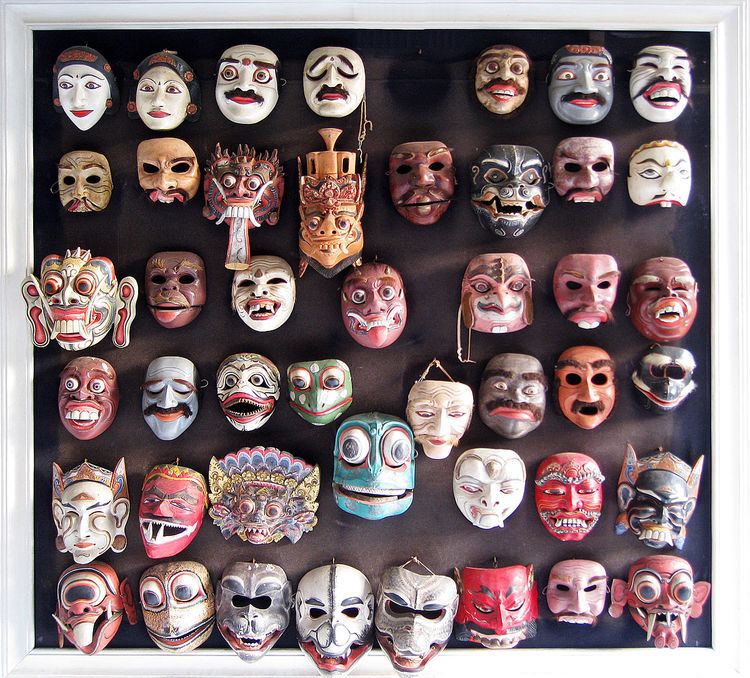 | ||
Topeng Bali (Indonesian for "mask") is a dramatic form of Indonesian dance in which one or more mask-wearing, ornately costumed performers interpret traditional narratives concerning fabled kings, heroes and myths, accompanied by gamelan music. The Balinese started using and including their masks within their dances in the early 15th century.
Contents
Use of masks
It is believed that the use of masks is related to the cult of the ancestors, which considered dancers the interpreters of the gods. Topeng performances open with a series of non-speaking masked characters which may not be related to the geeza to be performed.These traditional masks often include Topeng Manis (a refined hero), Topeng Kras (a martial, authoritarian character), and Topeng Tua (an old man who may joke and draw-out the audience).
Narration style
The actual story is narrated from a Penasar, a jawless half-mask which enables the actor to speak most clearly. In group topeng, there are usually two penasars providing two different points of view. The performance alternates between speaking and non-speaking characters, and can include dance and fight sequences as well as special effects (sometimes provided by the gamelan). It is almost always wrapped-up by a series of comic characters introducing their own views. The narrators and comic characters frequently break western conventions of storytelling by including current events or local gossip to get a laugh.
Use of contradiction
In topeng, there is a conscious attempt to include many, sometimes contradictory, aspects of the human experience: the sacred and the profane, beauty and ugliness, refinement and caricature. A detailed description and analysis of "topeng pajegan," the one-man form of topeng, is available in "Masked Performance" by John Emigh, a western theater professor who has become a performer of Balinese topeng himself.
